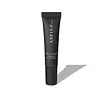What's inside
What's inside
 Key Ingredients
Key Ingredients

 Benefits
Benefits

 Concerns
Concerns

 Ingredients Side-by-side
Ingredients Side-by-side

Diisostearyl Malate
EmollientHydrogenated Polyisobutene
EmollientVp/Hexadecene Copolymer
Synthetic Beeswax
Emulsion StabilisingDextrin Palmitate
EmulsifyingAstrocaryum Murumuru Seed Butter
EmollientMangifera Indica Seed Butter
Skin ConditioningPunica Granatum Seed Oil
EmollientCucumis Sativus Seed Oil
EmollientPhytosterols
Skin ConditioningHibiscus Sabdariffa Seed Oil
EmollientBisabolol
MaskingPassiflora Edulis Seed Oil
EmollientHippophae Rhamnoides Fruit Extract
Skin ConditioningTocopherol
AntioxidantCholesterol
EmollientCeramide EOP
Skin ConditioningCeramide NP
Skin ConditioningCeramide As
Skin ConditioningCeramide AP
Skin ConditioningCeramide Ns
Skin ConditioningUbiquinone
AntioxidantFerulic Acid
AntimicrobialPalmitoyl Tripeptide-1
Skin ConditioningCetearyl Ethylhexanoate
EmollientSorbitan Isostearate
EmulsifyingPortulaca Pilosa Extract
Skin ConditioningSucrose Cocoate
EmulsifyingPalmitoyl Tripeptide-38
Skin ConditioningGlyceryl Stearate
EmollientAllantoin
Skin ConditioningAscorbyl Palmitate
AntioxidantEthyl Vanillin
MaskingHydrogenated Lecithin
EmulsifyingDipropylene Glycol
HumectantCI 77891
Cosmetic ColorantIsopropyl Titanium Triisostearate
EmollientCI 77491
Cosmetic ColorantCI 77492
Cosmetic ColorantDiisostearyl Malate, Hydrogenated Polyisobutene, Vp/Hexadecene Copolymer, Synthetic Beeswax, Dextrin Palmitate, Astrocaryum Murumuru Seed Butter, Mangifera Indica Seed Butter, Punica Granatum Seed Oil, Cucumis Sativus Seed Oil, Phytosterols, Hibiscus Sabdariffa Seed Oil, Bisabolol, Passiflora Edulis Seed Oil, Hippophae Rhamnoides Fruit Extract, Tocopherol, Cholesterol, Ceramide EOP, Ceramide NP, Ceramide As, Ceramide AP, Ceramide Ns, Ubiquinone, Ferulic Acid, Palmitoyl Tripeptide-1, Cetearyl Ethylhexanoate, Sorbitan Isostearate, Portulaca Pilosa Extract, Sucrose Cocoate, Palmitoyl Tripeptide-38, Glyceryl Stearate, Allantoin, Ascorbyl Palmitate, Ethyl Vanillin, Hydrogenated Lecithin, Dipropylene Glycol, CI 77891, Isopropyl Titanium Triisostearate, CI 77491, CI 77492
Hydrogenated Polyisobutene
EmollientDiisostearyl Malate
EmollientButyrospermum Parkii Butter
Skin ConditioningPolybutene
Microcrystalline Wax
Emulsion StabilisingSynthetic Wax
AbrasiveOctyldodecanol
EmollientHydrogenated Poly(C6-14 Olefin)
EmollientPolyglyceryl-2 Triisostearate
EmulsifyingParfum
MaskingPhytosteryl/Isostearyl/Cetyl/Stearyl/Behenyl Dimer Dilinoleate
Skin ConditioningDisteardimonium Hectorite
StabilisingEthylhexyl Palmitate
EmollientTocopheryl Acetate
AntioxidantTribehenin
EmollientStevioside
MaskingSynthetic Fluorphlogopite
Tetrahexyldecyl Ascorbate
AntioxidantTheobroma Grandiflorum Seed Butter
Skin ConditioningOrbignya Oleifera Seed Oil
EmollientSorbitan Isostearate
EmulsifyingLactic Acid
BufferingPalmitoyl Tripeptide-5
Skin ConditioningTocopherol
AntioxidantCitric Acid
BufferingHydrogenated Polyisobutene, Diisostearyl Malate, Butyrospermum Parkii Butter, Polybutene, Microcrystalline Wax, Synthetic Wax, Octyldodecanol, Hydrogenated Poly(C6-14 Olefin), Polyglyceryl-2 Triisostearate, Parfum, Phytosteryl/Isostearyl/Cetyl/Stearyl/Behenyl Dimer Dilinoleate, Disteardimonium Hectorite, Ethylhexyl Palmitate, Tocopheryl Acetate, Tribehenin, Stevioside, Synthetic Fluorphlogopite, Tetrahexyldecyl Ascorbate, Theobroma Grandiflorum Seed Butter, Orbignya Oleifera Seed Oil, Sorbitan Isostearate, Lactic Acid, Palmitoyl Tripeptide-5, Tocopherol, Citric Acid
 Reviews
Reviews

Ingredients Explained
These ingredients are found in both products.
Ingredients higher up in an ingredient list are typically present in a larger amount.
Diisostearyl Malate is an emollient and most often used in lip products. It comes from isostearyl alcohol, a fatty acid, and malic acid, an AHA.
As an emollient, Diisostearyl Malate helps create a thin film on your skin to trap moisture in. This helps keep your skin soft and smooth.
Hydrogenated Polyisobutene is a synthetic polymer. Polymers are compounds with high molecular weight. Hydrogenated Polyisobutene is an emollient and texture enhancer.
In one study, Hydrogenated Polyisobutene showed better skin hydration levels than Caprylic/Capric Triglyceride. As an emollient, it helps keep your skin soft and hydrated by trapping moisture in.
Hydrogenated Polyisobutene is often used as a mineral oil replacement.
Learn more about Hydrogenated PolyisobuteneSorbitan Isostearate is an emulsifer and cleaning agent. It is created from isostearic acid and sorbitol.
As an emulsifier, Sorbitan Isostearate prevents oils and water from separating.
Due to its isostearic acid base, it may not be safe for Malassezia or fungal acne.
Learn more about Sorbitan IsostearateTocopherol (also known as Vitamin E) is a common antioxidant used to help protect the skin from free-radicals and strengthen the skin barrier. It's also fat soluble - this means our skin is great at absorbing it.
Vitamin E also helps keep your natural skin lipids healthy. Your lipid skin barrier naturally consists of lipids, ceramides, and fatty acids. Vitamin E offers extra protection for your skin’s lipid barrier, keeping your skin healthy and nourished.
Another benefit is a bit of UV protection. Vitamin E helps reduce the damage caused by UVB rays. (It should not replace your sunscreen). Combining it with Vitamin C can decrease sunburned cells and hyperpigmentation after UV exposure.
You might have noticed Vitamin E + C often paired together. This is because it is great at stabilizing Vitamin C. Using the two together helps increase the effectiveness of both ingredients.
There are often claims that Vitamin E can reduce/prevent scarring, but these claims haven't been confirmed by scientific research.
Learn more about Tocopherol